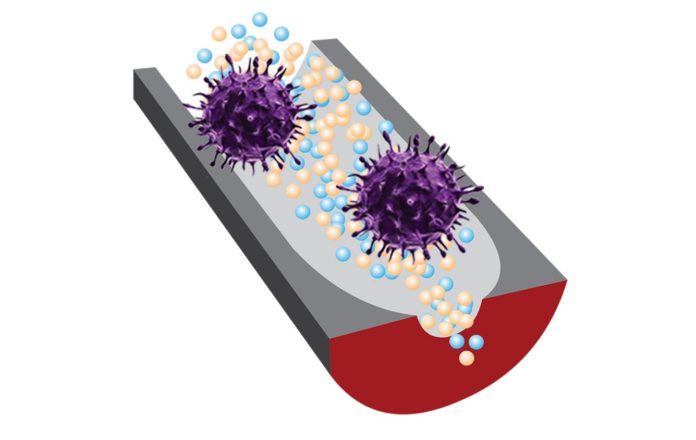This new sensor not only detects the presence of a virus, but also informs whether it is infectious in minutes without the need for pre-treatment of samples – an important tool for controlling the viral spread.
The sensor, developed by researchers at the University of Illinois Urbana-Champaign and collaborators, combines specially designed DNA fragments and nanopore sensing to target and detect infectious viruses in minutes without the need for pre-treatment of samples.
They tested the sensor’s capabilities against two key viruses that cause infections all over the world: the human adenovirus and the virus that causes COVID-19.
“The infectivity status is very important information that can tell us if patients are contagious or if an environmental disinfection method works,” said Ana Peinetti, the first author of the study.
She now leads a research group at the University of Buenos Aires in Argentina. “Our sensor combines two key components: highly specific DNA molecules and highly sensitive nanopore technology. We developed these highly specific DNA molecules, named aptamers, that not only recognize viruses but also can differentiate the infectivity status of the virus.”
PCR tests, the “gold standard” of viral detection, detect viral genetic material but cannot tell whether a sample is infectious or whether a person is contagious. According to the researchers, this can make tracking and containing viral outbreaks more difficult.
“With the virus that causes COVID-19, it has been shown that the level of viral RNA has minimal correlation with the virus’s infectivity. In the early stage when a person is infected, the viral RNA is low and difficult to detect, but the person is highly contagious,” said Yi Lu, a professor emeritus of chemistry.
“When a person is recovered and not infectious, the viral RNA level can be very high. Antigen tests follow a similar pattern, though even later than viral RNA. Therefore, viral RNA and antigen tests are both poor in informing whether a virus is infectious or not. It may result in delayed treatment or quarantine, or premature release of those who may still be contagious.”
Plaque assays, which detect infectious viruses, are available, but they require special preparation and days of incubation to produce results. According to the researchers, the new sensing method can produce results in 30 minutes to two hours and, because it does not require sample pre-treatment, it can be used on viruses that will not grow in the lab.
The ability to distinguish infectious from noninfectious viruses and detect small amounts from untreated samples that may contain other contaminants is important not only for rapid diagnosis of patients in the early stages of infection or who remain contagious after treatment, but also for environmental monitoring, according to Benito Marinas, another study author.
“We chose human adenovirus to demonstrate our sensor because it is an emerging waterborne viral pathogen of concern in the United States and throughout the world,” Marinas said.
“The capability to detect infectious adenovirus in the presence of viruses rendered noninfectious by water disinfectants, and other potentially interfering background substances in wastewaters and contaminated natural waters, provides an unprecedented novel approach. We see potential for such technology to provide more robust protection of environmental and public health.”
The researchers believe that by modifying the DNA to target different pathogens, the sensing technique could be applied to other viruses. The DNA aptamers used in the sensor, like the RNA probes used in PCR tests, can be easily produced using widely available DNA synthesizers. Nanopore sensors are also commercially available, allowing the sensing technique to be easily scaled, according to Lu, who is now a professor at the University of Texas at Austin.
The researchers are working on improving the sensitivity and selectivity of the sensors, as well as integrating their DNA aptamers with other detection methods, such as color-changing dipsticks or sensors that work with smartphones, to eliminate the need for specialized equipment. With the ability to distinguish noninfectious from infectious viruses, the researchers hope their technology will aid in the understanding of infection mechanisms.
“In addition, the aptamer technology could be further developed into multichannel platforms for detecting other emerging waterborne viral pathogens of public and environmental health concern, such as norovirus and enteroviruses, or for variants of the virus that causes COVID-19,” Marinas said.
The paper was published in ScienceAdvances.
